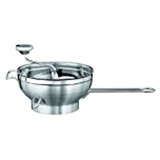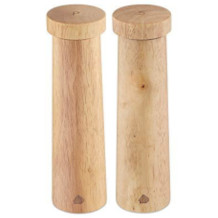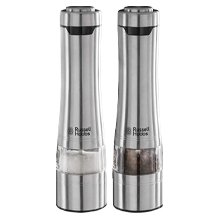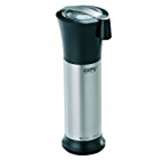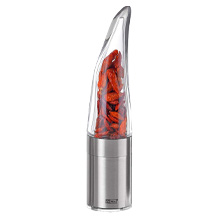Fruit press purchasing advice: how to choose the right product
- What You Need to Know
- A juicer is a natural way to process fruit into juice.
- The cheapest way to do this is with a manual fruit press, which requires the most effort.
- Fruit presses are usually made of wood or stainless steel.
- If only small quantities of fruit are processed, a fruit press with a capacity of three to five litres is sufficient.
- A useful accessory is a press cloth, which makes cleaning easier afterwards.
Chop fruit in no time at all
Delicious drinks can be made from fruit, such as juice. To make these yourself, all you need is fresh fruit and a fruit press. It is particularly practical for farmers and gardeners who grow their own fruit.
If you do not grow your own fruit, you can also naturally make juice from bought fruit. This also saves you money that you would otherwise have spent on expensive juices or smoothies from the supermarket. With a fruit press, the processing of pome, berry or stone fruit is gentle and all vitamins are preserved. However, the fruit must be processed into mash before using the fruit press. This can be done particularly well with a fruit or mash mill.
The Romans already used fruit presses
In the past, people had to crush fruit with their feet to produce juice. The Romans already had wooden lever presses because it was very time-consuming to crush grapes. The first spindle presses, which are very similar to today’s manual fruit presses, also originated from the Romans.
Manual, hydraulic or electric fruit press?
When buying a fruit press, consumers have the choice between a manual, hydraulic and electric press.
Manual fruit press
The classic form of fruit press is usually made of wood or stainless steel. It consists of a kind of basket into which the mash or fruit pieces are filled. Below this is the collection container into which the juice flows. On top of the basket is the pressing construction, which consists of the spindle and the rotating arm. Through the rotating arm you operate the spindle, which moves the pressing disc downwards and crushes the fruit residues into juice. In order to generate enough pressure, so-called pressing blocks made of wood are attached to the disc, which provide more weight. However, they do not last very long due to the moisture and must therefore be replaced regularly.
The manual fruit press is popular because it weighs only 8 to 14 kilograms and is inexpensive. However, it requires more effort than the other models. Since the manual fruit press is rather small, only small quantities of fruit can be processed, but it is easier to transport than other variants. Its great advantage is its environmental friendliness, as it requires neither electricity nor water. The many individual parts of the press make it easy to dismantle and clean. The risk of injury is very low when using a manual fruit press.
Hydro press
The hydro press, also called a water pressure press, also has a sieve basket in which the fruit is crushed. However, the press works with water that flows into the container and causes the pressure to rise. The water expands the rubber membranes inside the sieve basket and thus presses the fruit against the inner wall of the basket. The resulting juice then flows through a hose into the collection container. This process does not require any effort on the part of the user; he can even remove himself from the appliance in between.
However, a water connection is required, which limits mobility. In addition, the press is more expensive than a hand-operated version. A hydro press can produce larger quantities of juice in a short time than a manual one and is therefore particularly suitable for large families, farms or festivals.
Electric fruit press
An electric fruit press can also be used without force, as it is powered by electricity. However, it is very large and expensive. Therefore, it is mainly used in industry to process large quantities of fruit. This type of press is rarely found in private households. Particularly large fruit presses are called wine presses or troughs and are often used for wine production.
What to look for when buying a fruit press
If you want to buy a fruit press, you should pay particular attention to the size, the material and the price so that it meets your needs.
Material
To ensure that the fruit press lasts as long as possible, it should be made of a robust, durable material and have a high-quality finish, which is not always the case with very cheap versions under 50 euros. Fruit presses are either made of wood or stainless steel. Stainless steel models in particular have a long life, but are also more expensive. Cleaning a fruit press should be easy and quick. For these reasons, a model that can be dismantled into its individual parts is worthwhile. This is usually possible with screw presses, but rarely with hydraulic, electric and water-pressure fruit presses. Fruit presses made of stainless steel are easy to clean.
Weight
Especially if you want to set up your fruit press in different places, it should be light. However, with a high dead weight it will stand more stable. Fruit presses made of wood are lighter than models made of stainless steel and are therefore more suitable for mobile use.
Capacity and size
When choosing a fruit press, it is important to consider its capacity and how much juice you want to produce. If you have to refill your press every time to process all the fruit, you will have a lot of work to do. Especially with a manual fruit press, you can save time and energy if you only need one pass to juice. The smallest fruit presses have a capacity of about three litres and are therefore only intended for very little fruit and for producing small quantities of juice. If you have larger quantities of fruit to process, the capacity of the fruit press should be around 20 litres. The largest presses can hold up to 40 litres, which is usually not necessary in a private household. Overall, the juice yield is 50 to 70 percent of the capacity.
Also bear in mind that the more capacity the press has, the bigger it is. So for a device that can produce more juice in one pass, you need more space. The weight will also be higher and the fruit press will not be as easy to move.
Accessories
When buying a fruit press, you should pay attention to the accessories that are included. A so-called press cloth is particularly recommended, as it facilitates the production process and subsequent cleaning. However, if it is not part of the scope of delivery, you can also buy it at the hardware store. The price depends on the number, size and robustness of the press cloth. A pressing cloth is usually made of nylon, polyester or linen. The clearer you want the juice to be, the tighter the cloth needs to be. Make sure that the pressing cloth is the right size for your fruit press.
For a manual juicer you will also need pressing blocks. These are made of wood and are usually included in the delivery, but the original number is not always sufficient. Especially if you use your fruit press very often, the pressing blocks wear out quickly and need to be replaced. Depending on the number, they cost between seven and ten euros.
To turn the fruit into mash, a fruit mill is helpful. Thanks to the roller mill, it crushes the fruit in no time at all and is very inexpensive in its simple design. A fruit mill is usually made of stainless steel or aluminium and is therefore very easy to clean. You can put the products of the fruit mill directly into your fruit press and process them into juice. Make sure that the feed hopper is as large as possible if you want to prepare mash from larger quantities of fruit at once.
Juice barrels for storing fruit products are also practical, as you can safely store the juice in them. For most quantities, containers with a capacity of between 20 and 50 litres are ideal. Barrels with a drain tap also allow you to remove the juice cleanly.
Price
A fruit press is already an expensive affair in itself. How expensive the device is, however, depends on the type of press, its size and the material. Manual fruit presses are available from around 60 euros. Since they are usually smaller and often made of wood, they are the cheapest. If you want to buy a small but durable fruit press, you have to spend at least 80 euros. Water-press fruit presses are priced at several hundred euros, and only electric presses are even more expensive. There are no upper limits, but very high-priced models are usually industrial devices.
Tips for using the fruit press
Before you process your fruit into juice or wine with the fruit press, you must first chop the fruit. For larger fruits, for example apples, you should process them into mash with the help of a fruit mill. For smaller fruits, such as grapes, it is usually sufficient to score the outer skin with a knife. Fruit with pits, such as cherries, cannot be processed easily by the fruit press. To do this, you must first remove the pit.
As a first step, you should insert a press mash. Carefully fill in the mash and fold the edges of the press cloth so that the entire amount of fruit is covered. Make sure that the fruit press is standing or mounted securely and cannot slip away before operating it. The collection container should also be stable and correctly placed under the spout of the fruit press. Now you only have to operate the lever or the spindle to press the fruit. When all the fruit has been pressed out, you can open the basket and remove the leftovers together with the press cloth.
The correct cleaning of the fruit press
To prevent fermented residues from getting stuck in the fruit press, you should clean the appliance after each use. If you use a press cloth, you can simply lift it out of the fruit press together with the residue it contains, also called pomace, and dispose of the pomace in the compost or organic waste. The press cloth can be washed out with water. Thoroughly hose down the press basket with water to remove all residue. Then hang the press cloth up to dry.
Building a fruit press yourself
If you are handy, you can also build your own fruit press. Although this is somewhat time-consuming, it is cheaper than buying a ready-made press. It is important that the materials are right. Only hardwoods such as beech or oak are suitable as materials for a fruit press. You can find the right instructions on the Internet. Many sets make assembling the fruit press very easy.
Preserving the pressed juice
After you have made juice with the fruit press, you need to preserve it. First, you can store it in the refrigerator, where it will keep for about four to five days. If you want to keep the juice longer, you have to pasteurise it. To do this, heat it to 75 degrees Celsius for about ten minutes and then decant it directly. The temperature is especially important because too much heat will cause the loss of flavour and vitamins. There are special devices for pasteurisation that ensure that the temperature is maintained exactly. You can fill the pasteurised juice into glass bottles and it will keep for about one to two years.
Other ways of extracting juice
Especially if you only want to process small amounts of fruit into juice, you have a choice of different devices. With a citrus juicer, for example, you can squeeze small quantities of lemons or oranges by hand. To do this, you have to press the fruit onto the press cone and move it back and forth until all the juice has collected in the container underneath.
As an electronic way of extracting juice, there are juicers. They chop the fruit with the help of a fast rotating disc. Another practical option is a steam juicer, which uses steam to burst the cells of the fruit, causing the juice to come out. A so-called slow juicer can also be used to produce juice. It owes its name to the slow and gentle pressing process by means of a pressing screw. However, the fruit has to be heavily chopped for processing. Of course, you can also process the fruit with a smoothie blender. This is done with a rotating blade.

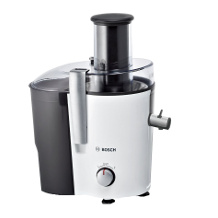
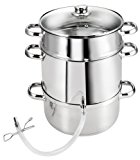
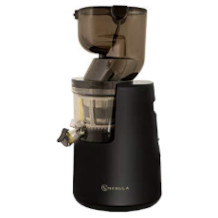


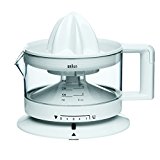
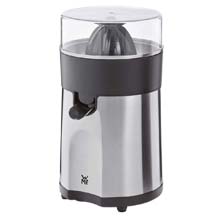
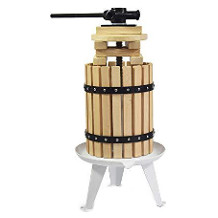
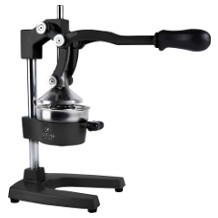
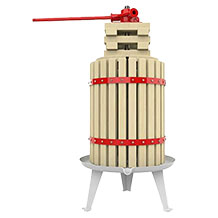
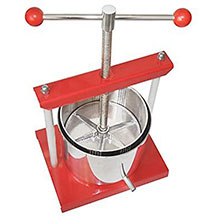
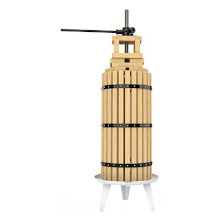
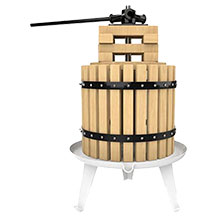

 560 reviews
560 reviews
